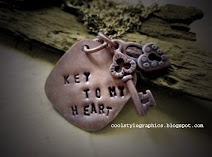
The night shooting usually takes place on a long exposure that is why all the moving luminous objects leave very evident lines and flames. Let’s try making some experiments with a luminous Ferris wheel.
We’ll need in this case the Radial Blur filter and some of experience working with layer masks.
1. Firstly we need to create a copy of the layer (CTRl+J).
Select after that the next option, Filter > Blur > Radial Blur, where we have to move the slider on Amount on 10 selection. Choose next on the Blur Method list the Spin selection. Change after that the Quality value on Good and press OK.

Make one more copy of the layer and give to the new copy the Screen blending mode.

2. Merge down the last two layers by choosing the command Layer > Merge Down (Ctrl+E) and set for the new result the Screen blending mode.

This layer we’ll hide with a mask, selecting in the menu the next option: Layer > Add Layer Mask > Hide All.

Next we’ll select the Brush Tool (B) to paint the mask accurately with white color to make visible only the wheel.
3. When painting the mask, we need to try not to touch the unmoving objects, like the pavilion or the wheel’s supports. Their blurring could be very inappropriate for our final result. On the other hand, we need all the moving parts of the wheel to be painted out very accurately.

4. Make a copy of the layer

and select for it Filter > Blur > Gaussian Blur, having a radius of 10.

Make a click on the mask and fill it with black color (Edit > Fill).


ext we need again to process the layer’s mask by painting the wheel’s zones with white color using the Brush Tool (B) with Hardness on 45%.
5. Get back to the Background’s layer and select the Eyedropper Tool (I) for select the colors of blue neon lights on the wheel.
Choose after that Select > Color Range with Fuzziness parameter of 119.
Copy the marked elements on a new layer: Edit > Copy and Edit>Paste.
Apply also for the new layer the next selection: Filter > Blur Radial with the same parameters we have used at the beginning.
6. The final stage includes changing Opacity for layers with mask
Finally we’ll paste together all the picture’s layers in a single layer, choosing in the menu the next option: Layer > Flatten Image.
Happy Night Shooting! :)





















































